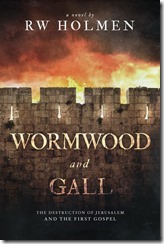The Midwest Independent Publishers Association (MIPA) recently named Wormwood and Gall as one of three finalists for a Midwest Book Award in the Religion/Philosophy category. The awards program, which is organized by MIPA, recognizes quality in independent publishing in the Midwest.
The 30th annual Midwest Book Awards was open to books published and copyrighted in 2019 in MiPA’s 12-state Midwestern region: Illinois, Indiana, Iowa, Kansas, Michigan, Minnesota, Missouri, Nebraska, North Dakota, Ohio, South Dakota and Wisconsin.This year’s competition garnered 221 entries in 31 categories, which were judged by a panel of 99 librarians and booksellers from every state in MiPA’s 12-state Midwestern region.
Typically an awards gala is held every year in Minneapolis to announce the winners, but this year, due to travel and shelter-in-place restrictions from Covid-19, winners will be announced during a free, online watch party on Facebook set for June 27 at 7pm CDT, with book prizes for attendees and a special segment by independent booksellers throughout the Midwest on how to support them at this time.
“Although we were disappointed to cancel our gala this year, we are excited for the potential to attract a larger audience who can help make this a truly regional event that celebrates Midwestern publishing,” said Jennifer Baum, chair of the Midwest Book Awards.
The Midwest Book Awards, which began in 1989, is organized by the Midwest Independent Publishers Association (MiPA). Founded in 1984, MiPA exists today as a vibrant professional nonprofit association that serves the Midwest independent publishing community through education, networking, and peer recognition.
Holmen’s earlier work, Queer Clergy; A History of Gay and Lesbian Ministry in American Protestantism was previously a finalist for a Minnesota Book Award in the non-fiction category.

